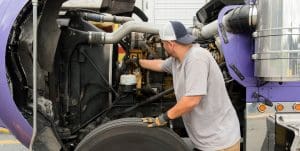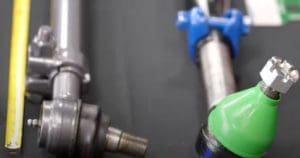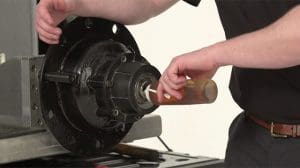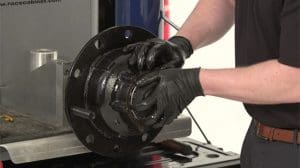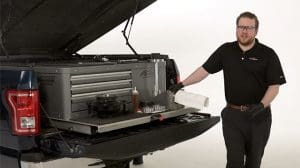Dans le monde hautement compétitif du transport routier commercial, des pratiques d'entretien saines favorisent la sécurité et la rentabilité. Un entretien régulier permet aux camions de fonctionner à des performances optimales, et c'est l'un des meilleurs moyens d'éviter les réparations coûteuses et les temps d'arrêt. Il s'agit d'être cohérent et de résoudre les problèmes potentiels avant qu'ils ne deviennent des problèmes majeurs. Dans cet article, nous aborderons quelques conseils qui peuvent aider à expliquer l'importance de développer des pratiques d'entretien préventif efficaces pour votre flotte.
Comment planifier l'entretien préventif de votre camion
En tant que gestionnaire de flotte, il est important de rester proactif dans le suivi des permis, licences, dépenses et immatriculations. Cela vous permettra d'éviter des amendes coûteuses. Il en va de même pour le suivi des rapports des conducteurs et des calendriers d'entretien. Un système efficace est la clé pour garder une longueur d'avance et résoudre les problèmes avant qu'ils ne deviennent des problèmes plus coûteux. En donnant la priorité à ces éléments, vous vous positionnez pour minimiser les risques, réduire les temps d'arrêt et assurer le bon fonctionnement de votre flotte.
Les systèmes automatisés de gestion des données offrent un moyen fiable et précis de surveiller les comportements de conduite et le kilométrage des véhicules. Grâce à des commentaires détaillés pour chaque conducteur, les gestionnaires de flotte découvrent qu'ils peuvent gérer plus efficacement l'entretien programmé de chaque véhicule.
Notre technologie de véhicule STEMCO (SVT™) les produits utilisent des technologies intelligentes pour vous aider à prendre des décisions basées sur des données qui simplifient les procédures de maintenance et améliorent la sécurité globale de votre flotte. Pour plus d'informations, consultez notre blog sur comment obtenir des rapports de flotte plus précis.
Préparez-vous pour le printemps avec notre liste de contrôle d'entretien de printemps
Lorsque les températures augmentent au printemps, cela signifie souvent qu'il est temps de commencer à penser au nettoyage de printemps et à l'entretien de votre flotte.
Les mois plus chauds, en particulier les températures estivales élevées, entraînent davantage de conducteurs, davantage de projets de construction et davantage d'accidents de la route sur les routes. Cela signifie que les prochains mois présenteront le plus de défis, nous voulons donc nous assurer que vous êtes prêt et préparé pour les kilomètres à venir.
-
Huile et fluides
Le changement de saison est un bon rappel qu'il est également temps de changer l'huile. Les changements d'huile réguliers peuvent aider à prévenir les dommages au moteur tout en améliorant les performances du camion. Assurez-vous de profiter de cette occasion pour vérifier également d'autres liquides importants comme le liquide de transmission, le liquide de refroidissement, le liquide de direction assistée, le liquide de frein et les lubrifiants des enjoliveurs (recherchez des signes de fuite autour des joints de roue et des joints d'enjoliveurs). Conseil technique n°21 de STEMCO est une excellente ressource pour l’inspection recommandée des applications d’huile et de graisse semi-fluide. Le remplacement des filtres à air et à carburant peut également améliorer le rendement énergétique et contribuer à la santé globale du moteur du camion.
-
Pneus et freins
Les mois froids de l’hiver ont un impact considérable sur les pneus. Les pressions chutent à mesure que les températures atteignent des températures glaciales, ce qui réduit considérablement la durée de vie de la bande de roulement et l'économie de carburant. Le printemps est le moment idéal pour évaluer la pression des pneus et mesurer la profondeur des sculptures. Si les pneus semblent endommagés ou usés, ou ne peuvent pas maintenir une pression constante, l'option la plus sûre et la meilleure consiste à les remplacer avant de reprendre la route. Cela est particulièrement vrai si des pneus hiver ont été utilisés au cours des derniers mois.
Assurez-vous également d’inspecter les plaquettes de frein, les rotors et les étriers pour déceler tout signe d’usure. Des freins défectueux peuvent entraîner des accidents et des réparations coûteuses, c'est donc le bon moment pour les remplacer, si nécessaire.
-
Système de refroidissement et préparation CVC
C'est également le bon moment pour examiner le système de refroidissement et le système de CVC du camion afin d'être prêt à affronter des températures printanières et estivales plus élevées. Cela signifie également vérifier les niveaux (et la couleur) du liquide de refroidissement et inspecter les tuyaux ou les courroies pour déceler des composants desserrés, des fuites ou une usure excessive.
Vous devez vous assurer que le système CVC fonctionne correctement, car un système défectueux peut causer de l'inconfort et des problèmes de sécurité lorsque vous êtes sur la route. Prendre le temps de préparer correctement le système de refroidissement et de CVC du camion garantira le confort du point A au point B et au-delà.
-
Batterie et système électrique
La batterie, le démarreur et l'alternateur d'un camion doivent être en parfait état pour éviter tout problème de démarrage ou tout blocage sur la route. L'hiver a des conséquences néfastes sur les batteries, car le froid a tendance à les vider rapidement. Vous devrez donc vérifier la charge et la date d'expiration de la batterie avant de vous lancer dans la nouvelle saison. Testez la batterie et le système électrique pour comparer la tension après charge et décharge. Et assurez-vous que les feux et les signaux du camion fonctionnent correctement pour éviter tout problème supplémentaire en bordure de route.
-
Nettoyage de printemps
Le temps hivernal n'est pas doux pour l'extérieur du camion : il laisse derrière lui du sel et des débris corrosifs. Pour protéger la peinture et l’apparence du camion, il est important de le laver soigneusement et en profondeur. Mais ne vous arrêtez pas là ! Prenez un peu plus de temps pour nettoyer les surfaces à l'intérieur du camion, y compris le tableau de bord, les sièges et les tapis de sol. Pensez également à remplacer le filtre d’habitacle du camion pour rafraîchir les choses pour les prochains voyages du printemps et de l’été.
Enfin, préparez-vous aux averses et aux tempêtes printanières en changeant les essuie-glaces et en nettoyant le pare-brise et les fenêtres avec un nettoyant pour vitres doux et un chiffon doux. Cela offrira une visibilité maximale sur les kilomètres à venir, qu'il pleuve ou qu'il fasse beau.
Pour en savoir plus sur d’autres conseils et produits qui peuvent vous aider à rationaliser votre flotte, assurez-vous de Explorez nos autres blogs Wheelhouse.



